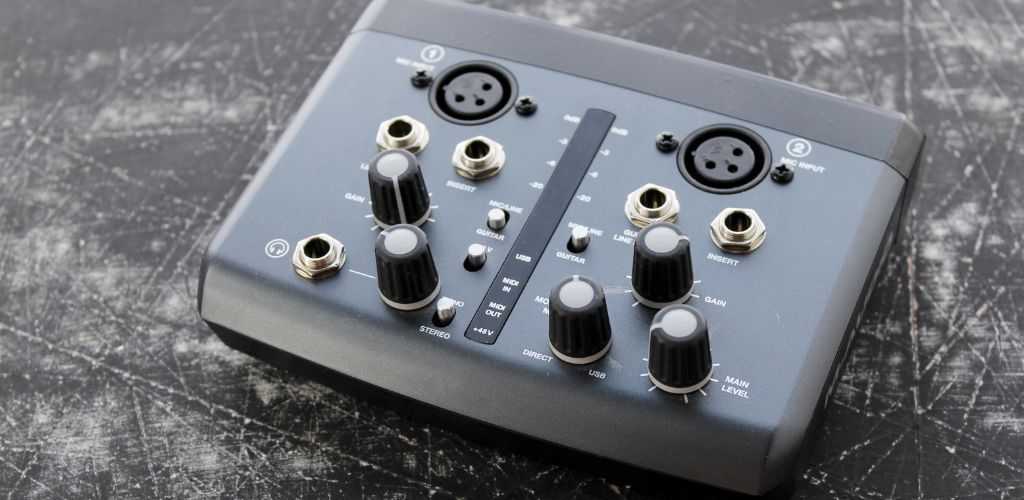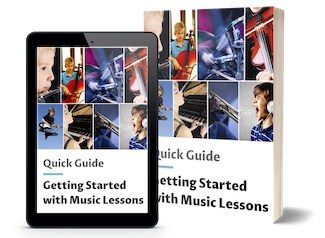Best
Affordable Audio Interface
Solo AFFORDABLE YET GREAT-SOUNDING INTERFACE
-
Overall: Incredibly High-Quality Audio Interface For Home And Professional Studios
-
Best Feature: Featuring The Best Yet Scarlett Preamps - Now With Air Mode
-
TedScore™: 7/10
Best
Recording Audio Interface
Um2 SIMPLE AND AFFORDABLE USB AUDIO INTERFACE
-
Overall: Can Easily Fit In Your Pocket, Making It The Perfect Choice For Musicians On The Go
-
Best Feature: Requires Minimal Setup - Plug It Into Your Computer, And You're Ready To Go
-
TedScore™: 8.5/10
Best
Portable Audio Interface
FIDELITY
-
Overall: Comes With 2 Dual-Purpose Front-Panel Input Channels, Each With High-Quality Mic Preamplifiers
-
Best Feature: Individual Channel-Trim Controls With 0 To +35 DBu Mic Gain Range
-
TedScore™: 8/10
Finding the best audio interface for under $100 might seem daunting, but I’m here to share some gems that’ll make your wallet sing with joy.
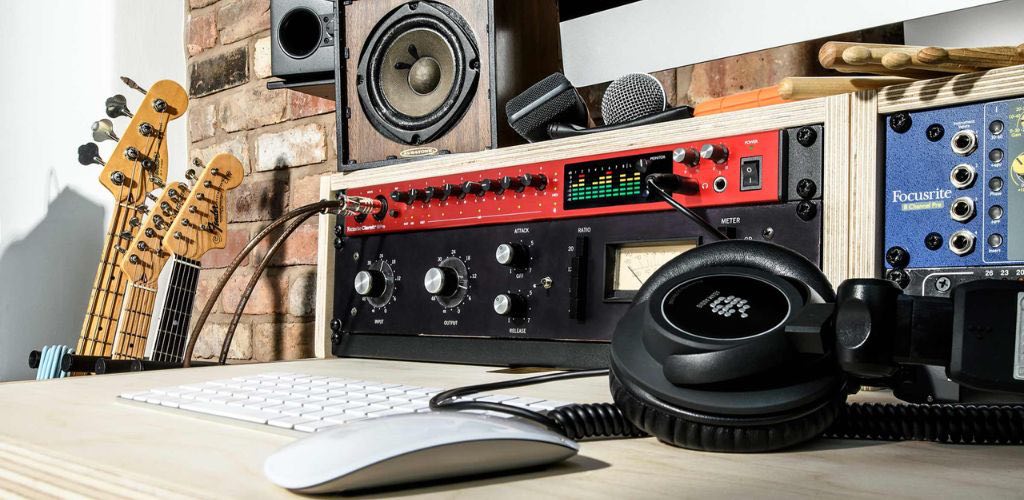
I know the struggle of balancing quality and cost and trust me; great sound doesn’t have to break the bank. From the versatile Rockville RockMix to the reliable PreSonus AudioBox USB 96, I’ve got some fantastic picks lined up that will enhance your audio experience without stretching your budget.
Discover which audio interfaces under $100 stand out from the crowd. Let’s go on this journey together, and you’ll be a step closer to achieving your sonic dreams. Ready to elevate your sound game?
Top Audio Interfaces
Under $100
Finding the best budget audio interface is like hunting for treasure! Fear not, as I’ve explored various options to bring you affordable and reliable choices. Whether you’re a beginner or a seasoned pro, these models pack a punch without emptying your wallet.
Behringer U-Phoria Series
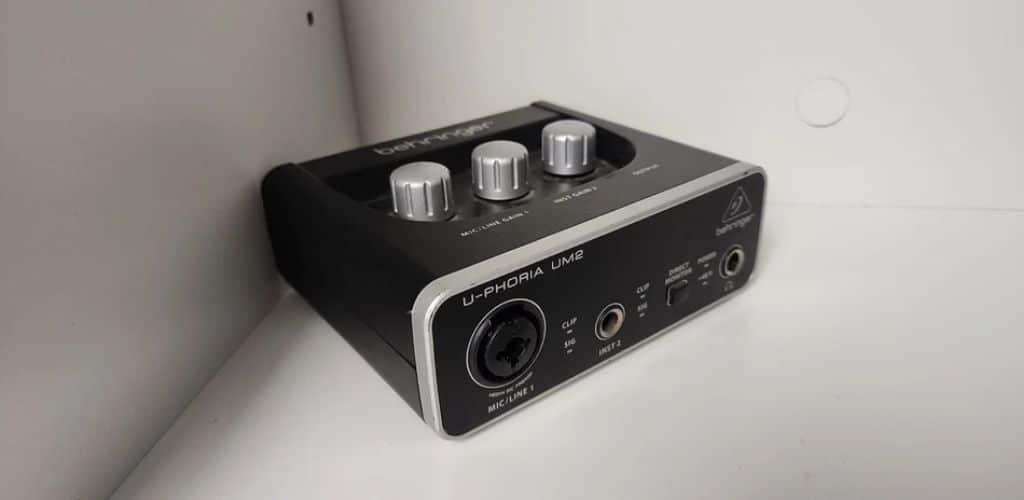
The Behringer U-Phoria series offers pocket-friendly options without compromising quality. Models like the UM2 and UMC22 deliver remarkable sound for an “affordable” price. Each interface comes with MIDAS preamps, ensuring clarity and low noise levels.
I’ve found the UM2 perfect for solo artists, while the UMC22 appeals to those who need more versatility. Both models offer USB connectivity, making them a breeze to install. Who knew budget-friendly could sound this good? It’s a steal!
Behringer U-Phoria UM2

PERFECT FOR: recording and controlling both guitar and microphone inputs
FEATURES: Can easily fit in your pocket, making it the perfect choice for musicians on the go
OTHER INFO: Requires minimal setup - plug it into your computer, and you're ready to go
Behringer U-Phoria UM2
- Has XLR and 1/4" inputs, for recording microphones and instruments simultaneously
- Budget-friendly and great for those who don't want to spend a lot of money
- Produces clear and high-quality audio recordings
- Sturdy and has a durable metal casing that can withstand wear and tear.
- The knobs are made of plastic, which can impact the durability
When you click ‘Check Price’, you’ll see there are loads of great places to buy this item. Our personal favorite is Sweetwater for the US, and Thomann and Gear4Music for the UK & Europe.
They are the largest music retailers, with excellent customer service, competitive prices, really fast shipping, and the longest guarantees.
The professional musician who wrote this article combined many things,
from the product build, manufacturer’s reputation through to feedback
from other users, to create our famous TedScore™.
Focusrite Scarlett Solo and 2i2 Models
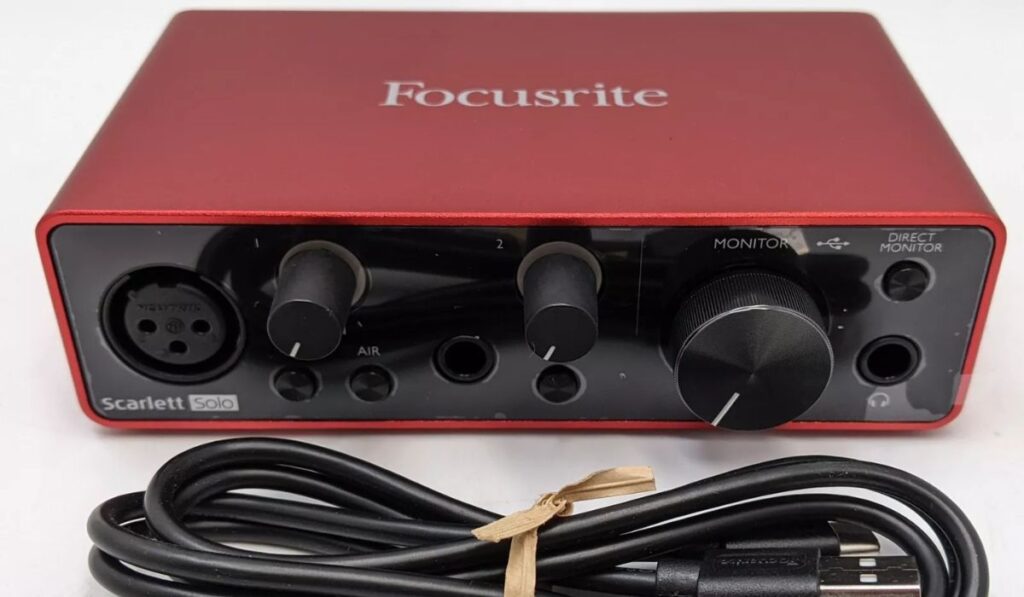
Focusrite’s Scarlett Solo and 2i2 are like the rock stars of budget interfaces. The famous Scarlett preamps shine in these models, providing crystal-clear audio. The Solo is a fantastic choice for solo musicians. It has one XLR input and one instrument input.
If you’re a duo, the 2i2 deserves your attention. It offers two inputs and includes the Air function to enhance vocal sound. The Scarlett range often comes bundled with software, adding more value. It’s like unwrapping a musical gift!
Focusrite Scarlett Solo (3rd Gen)

PERFECT FOR: guitarists, vocalists, podcasters, and producers
FEATURES: Incredibly high-quality audio interface for home and professional studios
OTHER INFO: Featuring the best yet Scarlett preamps - now with Air mode
Focusrite Scarlett Solo (3rd Gen)
- Optimised audio conversion for the best quality audio every time
- XLR input for recording vocals or instruments
- Includes Ableton Live Lite, Splice Sounds subscription and other music software
- One high-headroom instrument input to plug in your guitar or bass
- High-performance converters enable you to record and mix at up to 24-bit/192kHz
- Only has one mic input and one instrument input
When you click ‘Check Price’, you’ll see there are loads of great places to buy this item. Our personal favorite is Sweetwater for the US, and Thomann and Gear4Music for the UK & Europe.
They are the largest music retailers, with excellent customer service, competitive prices, really fast shipping, and the longest guarantees.
The professional musician who wrote this article combined many things,
from the product build, manufacturer’s reputation through to feedback
from other users, to create our famous TedScore™.
PreSonus AudioBox and Studio Series
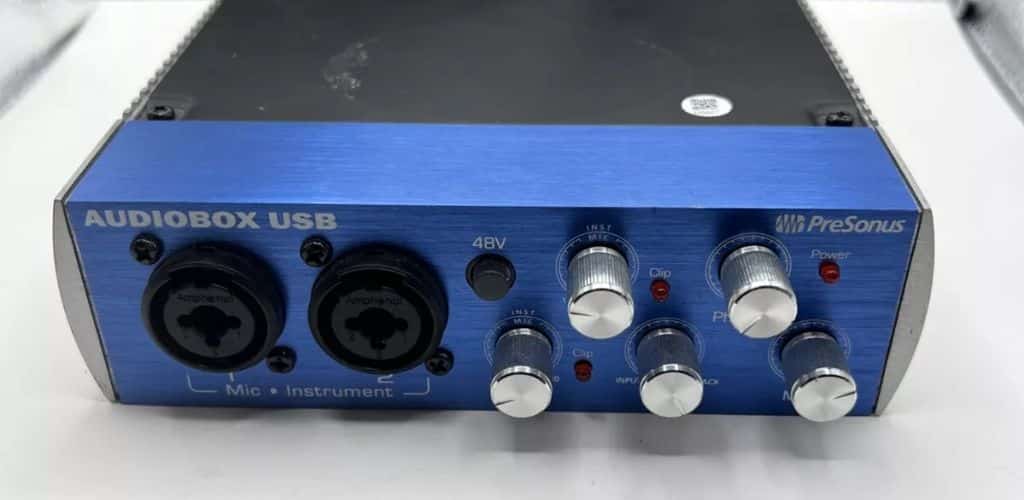
PreSonus knows how to make tech sing, even on a budget. Their AudioBox USB 96 and Studio 24c models bring a professional touch to home studios. Both offer 24-bit/96kHz resolution for crisp sound, and they come with Studio One recording software.
The AudioBox USB 96 is a classic, favored for its easy setup and robust build. The Studio 24c raises the bar with USB-C connectivity and impressive preamps. They make recording and producing music at home a breeze. Talk about getting your money’s worth!
PreSonus AudioBox USB 96

PERFECT FOR: artists with small bedroom setups
FEATURES: Comes with 2 dual-purpose front-panel input channels, each with high-quality mic preamplifiers
OTHER INFO: Individual channel-trim controls with 0 to +35 dBu mic gain range
PreSonus AudioBox USB 96
- Has 2 combo mic/instrument inputs
- 48V phantom power for condenser microphones
- Headphone jack with level control
- LED clip indicator for each channel
- Includes Studio One Artist, Studio Magic, and Ableton Live Lite software
- The preamps are transparent but may not be sufficient for more professional use
When you click ‘Check Price’, you’ll see there are loads of great places to buy this item. Our personal favorite is Sweetwater for the US, and Thomann and Gear4Music for the UK & Europe.
They are the largest music retailers, with excellent customer service, competitive prices, really fast shipping, and the longest guarantees.
The professional musician who wrote this article combined many things,
from the product build, manufacturer’s reputation through to feedback
from other users, to create our famous TedScore™.
Selecting the Right Budget Audio Interface
Finding the best budget audio interface can feel like hunting for treasure in a sea of technical jargon. Here, I’ll guide you through the essentials with a sprinkle of humor to keep things lively.
Understanding Audio Interface Basics
Before diving into the specifics, let’s unwrap the basics. An audio interface is that magical box that connects your microphone or instrument to your computer, turning those auditory waves into digital data. These interfaces come in all shapes and wallets, including USB audio interfaces and those under $100.

You can still get something solid without losing an arm and a leg. My job is to help you get the best bang for your buck. A dependable budget audio interface can provide quality sound, making it a perfect ally for budding musicians and podcasters.
Key Features to Consider
When checking out the specs, focus on the combo inputs. These can handle both mic and instrument cables, which adds versatility. Phantom power (typically 48v) is crucial if you plan to use condenser microphones—just don’t look for poltergeists in your setup!
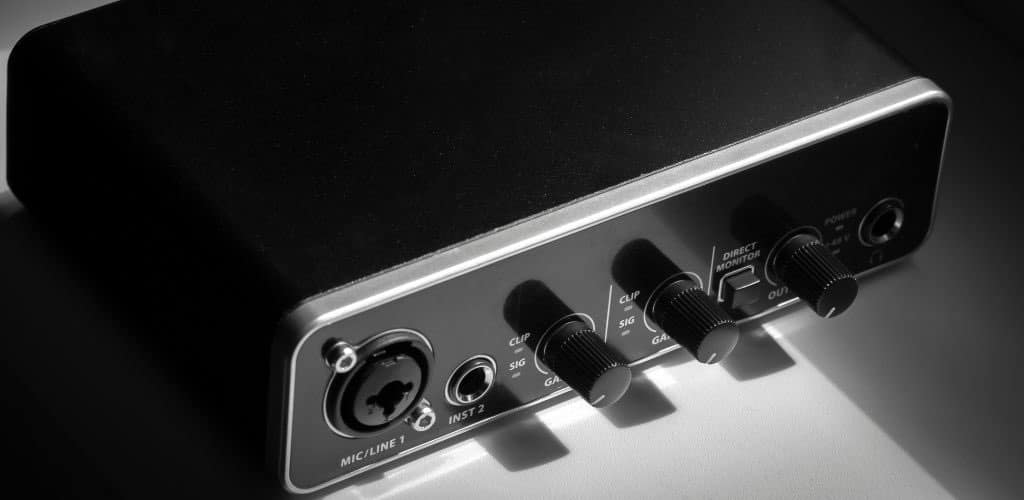
Look for interfaces with MIDI I/O if you need to integrate keyboards or drum machines. It’s a real-time-saver for anyone adding electronic instruments to their audio playground. And let’s not forget preamps, which amplify those delicate signals and are vital for clarity.
The Importance of Audio Quality and Performance
Audio quality and performance are critical for achieving professional-sounding recordings. Key factors include the preamp and recording quality, sampling rate and bit depth, and considerations for latency and direct monitoring.
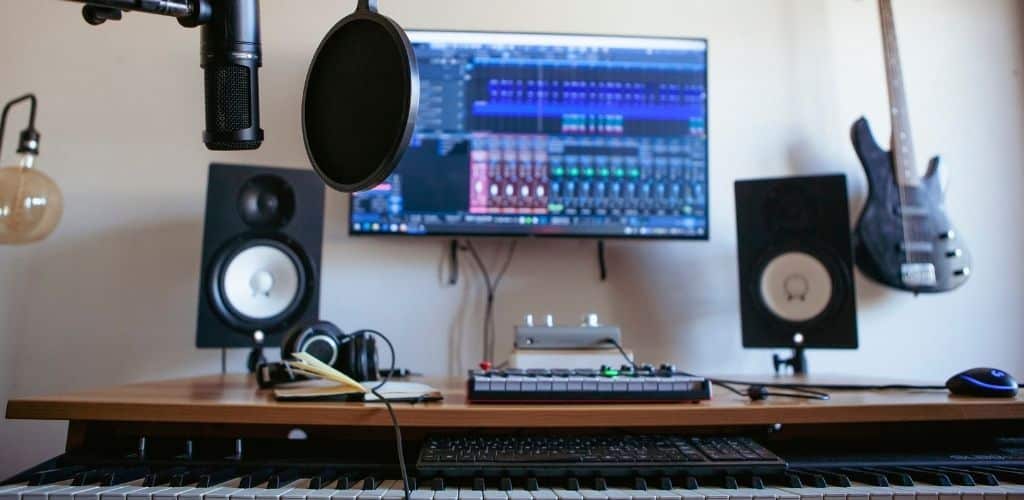
Preamp and Recording Quality
The preamp takes the spotlight, often being the unsung hero. It amplifies sound to levels necessary for recording without introducing noise. A good preamp is pivotal, ensuring the sound remains clear and vibrant from the start.
You’re not just capturing sound; you’re capturing a vibe, a moment. I focus on preamps that provide clean gain, helping vocals and instruments maintain their true essence. Quality here can mean the difference between a mediocre track and something unique.
Sampling Rate, Bit Depth, and Resolution
Sampling rate and bit depth come into play next. Higher sampling rates, like 192 kHz, capture more detail. This sounds technical, but think of it as having a high-res camera for your audio. Every nuance, every tiny detail, is captured.
The common 24-bit/192kHz setting offers a balance of quality and manageable file sizes. This gives me the fidelity I need for crisp audio. Padding this with a good A/D conversion and resolution enhances the depth.
Latency and Direct Monitoring Considerations
Latency can derail a recording faster than my cat chasing a laser pointer. In simple terms, it’s the delay between input and output sounds. Direct monitoring minimizes this delay, letting me hear sound instantly—no frustrating echo!
I look for interfaces that provide low latency through efficient processing. It’s like upgrading from dial-up to fiber optics; everything speeds up. This ensures I’m not pulling out my hair in frustration and can focus on what’s important—making great music.
Integrating with Recording Software and DAWs
Navigating the realm of audio interfaces can be a lot like trying to find the best cupcake in a bakery. The right choice needs to fit seamlessly with your software and style. Let’s explore those that make your musical journey smooth and efficient.
Compatible Software for Home Studios
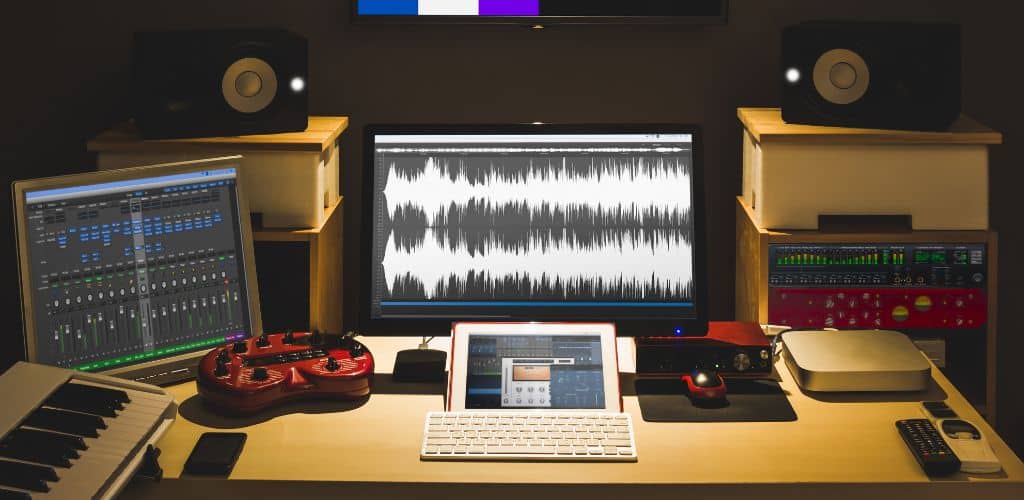
When choosing an audio interface, one crucial factor to consider is its compatibility with various Digital Audio Workstations (DAWs) like Ableton Live and Pro Tools. Thankfully, most budget interfaces are versatile enough to work with popular options.
Having an interface that supports a software suite can expand your creative potential. For example, some devices come bundled with the Studio Magic Plug-in Suite, which enhances your sound with exciting effects.
ASIO4ALL, a free audio driver, is my secret weapon for achieving low latency with almost any DAW. Compatibility matters and I ensure the interface easily integrates without technology tussles.
Plug-and-Play Interfaces for Easy Setup
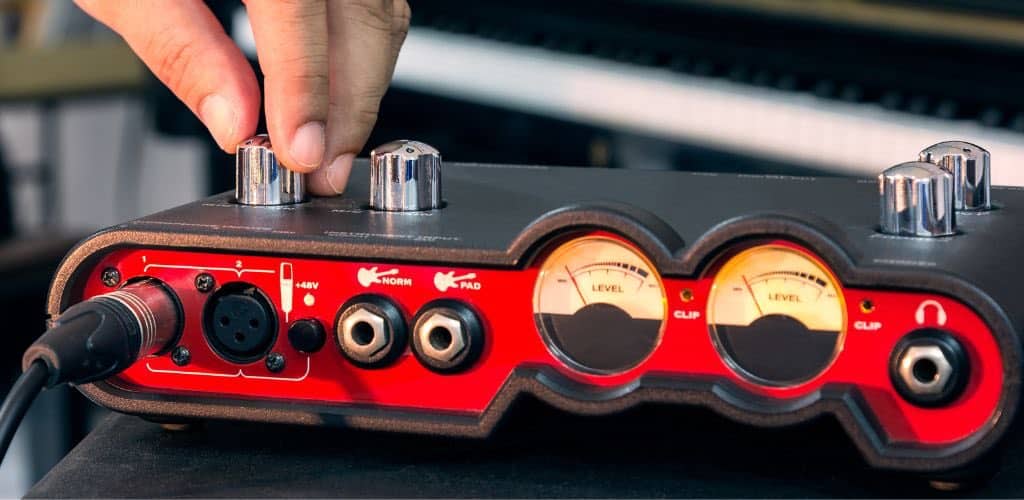
Let’s talk fun and functionality! Plug-and-play interfaces are my go-to because they allow me to jump straight into recording without a tech meltdown. These interfaces don’t need advanced setup processes, making them ideal for beginners or anyone averse to manual reading marathons.
Many offer USB connectivity, ensuring I can connect them to my computer, get things rolling, and enjoy stress-free music creation. Plus, with most interfaces supporting software bundle downloads for applications like Studio One, you’re good to go with just a click.
Plug it in, hit record, and feel like a music magician! With these interfaces, the only thing standing between inspiration and creation is the time it takes to plug in a USB cable.
Additional Considerations and Expanding Your Setup
When setting up your home studio, it’s essential to look beyond the initial purchase. Consider the durability of your equipment, potential expandability for future needs, and how interfaces can specifically enhance podcasting and streaming.
Durability and Build Quality
It’s crucial to ensure your audio interface is built like a solid rock. This consideration avoids frustration down the line. A robust frame can withstand the occasional knock or drop—because, let’s face it, accidents happen. Metal casings are often more durable than plastic, delivering reliability under pressure.
Let’s not forget about the quality of the knobs, buttons, and inputs. You don’t want components wearing out before your masterpiece is complete. They should feel sturdy and responsive. Trust me, a flimsy knob is a heartbreak waiting to happen, especially when you’re in the middle of an epic guitar riff recording session.
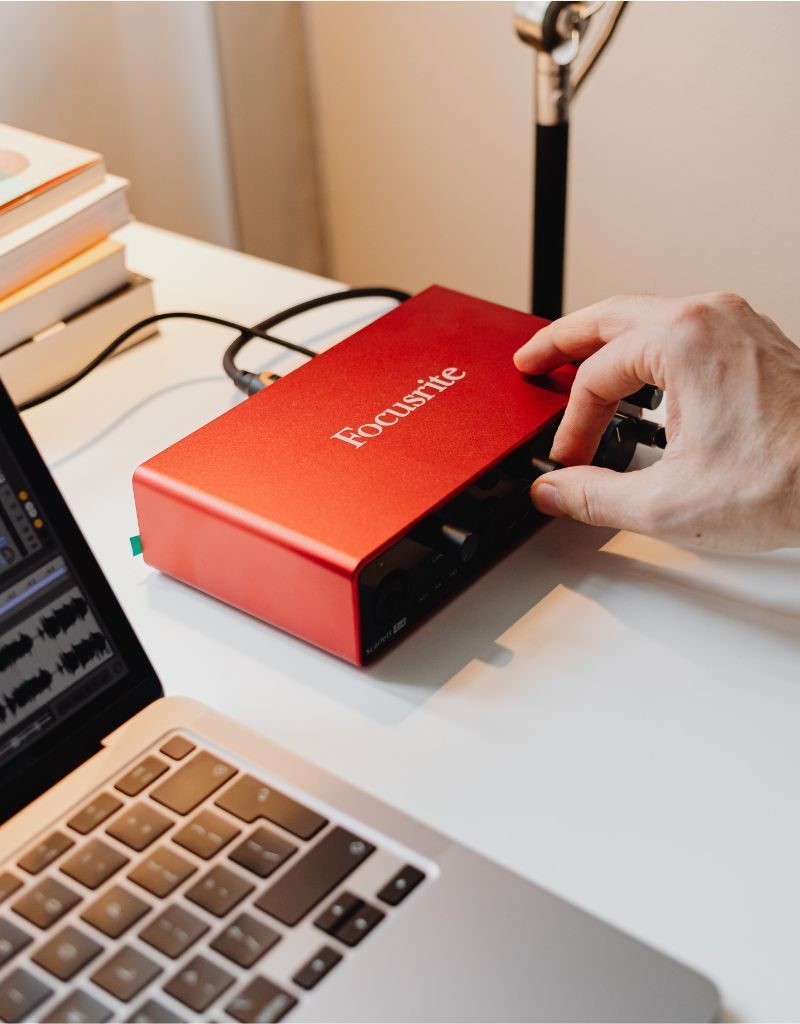
Future-Proofing with Expandability Options

Thinking about future expandability is like planning a second ice cream scoop. If you intend to add more equipment, MIDI controllers, or additional microphones, pick an interface with enough inputs and outputs to grow with you. I always recommend checking for MIDI compatibility if you’re a musician who loves multi-instrument setups.
It’s helpful to ensure your interface supports a range of microphones, from condenser to dynamic. A few extra bucks now could mean a seamless home studio setup for future projects. Who doesn’t want to be prepared for when your podcast explodes in popularity?
The Role of Interfaces in Podcasting and Streaming
Podcasting and streaming are all about clarity and engagement. I’ve found that a good interface can make those dynamic and condenser mics shine like stars. Look for interfaces that offer clean preamps and phantom power support—perfect for crisp, professional-sounding vocals.
Many interfaces now also include loopback features, allowing you to combine multiple audio sources easily. Imagine smoothly integrating music clips and voiceovers in your live streams or podcasts.
Whether discussing cooking tips or shredding on a guitar, these details make your content pop. Plus, maintaining quality in a home recording environment is like finding the best cheese for your toasty; it elevates the entire experience!
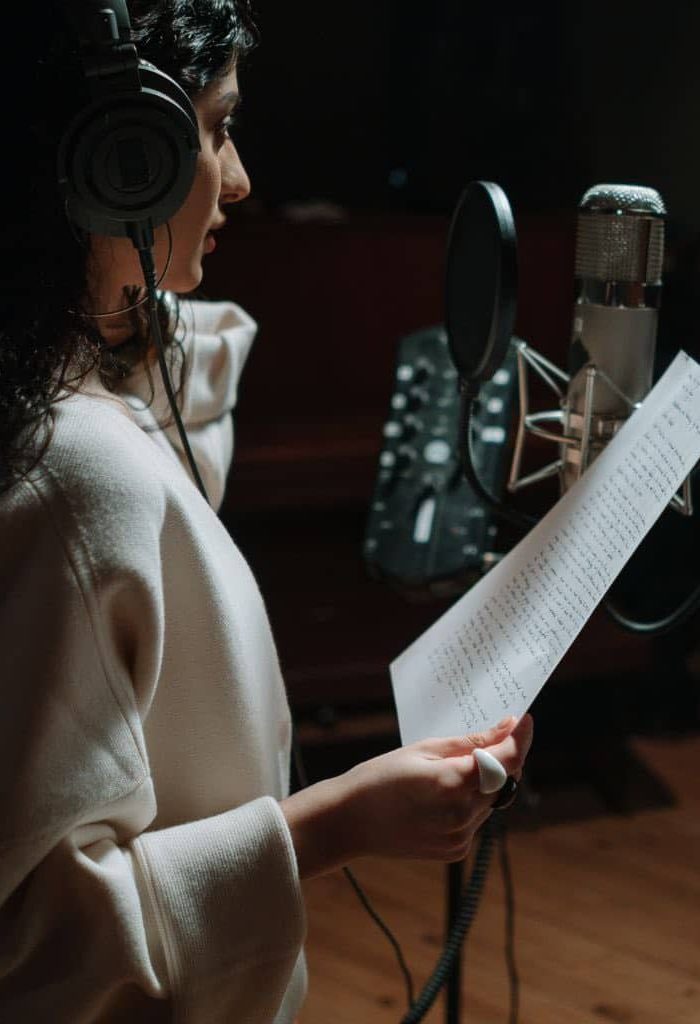
Final Verdict:
Best Audio Interfaces For Under 100
If you’re on the hunt for the best audio interface for under $100, you’ll want to consider options that provide great value without sacrificing quality.
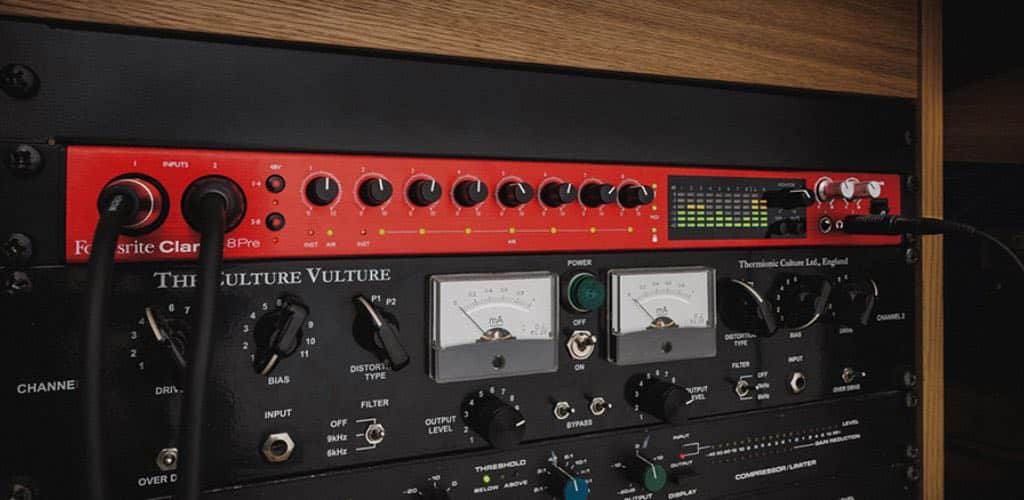
The best USB audio interface in this price range often features a headphone output for easy monitoring, which is essential for recording and mixing. Many of these decent interfaces cater to users of virtual instruments, making them perfect for musicians looking to create music at home.
A single input interface can be particularly useful for solo artists or podcasters who need a straightforward solution. While there are cheaper interfaces available, investing in a reliable model can significantly enhance your overall sound quality, especially when working with line level instruments.
Whether you’re eyeing the Behringer U-Phoria UM2 for its simplicity or the M-Audio M-Track 2X2 for its sleek design, there’s a match for every budding producer. Consider your recording needs and future goals before making the final leap.
In this tech-tangled world, an excellent audio interface can be your artistic secret weapon. It’s both a way to experiment and a step toward professional sound production.
Don’t go yet…
If you’re looking to elevate your streaming game, Best Audio Interface For Streaming offers insightful recommendations that will help you choose the perfect gear for crystal-clear audio!
FAQ's
You should expect to spend between $100 and $500 on a quality audio interface, depending on your needs and the features you require, with entry-level models suitable for beginners and higher-end options offering advanced capabilities for professional use.
Yes, a cheap audio interface can affect sound quality, often resulting in lower fidelity, higher noise levels, and increased latency compared to more expensive models with better components and features.
The Focusrite Scarlett 2i2 is widely regarded as one of the best audio interfaces for Windows 10 due to its excellent compatibility, high-quality preamps, and user-friendly setup.
Yes, audio interfaces are worth it because they significantly enhance sound quality, reduce latency, and provide better connectivity options for recording and producing music compared to standard computer sound cards.


